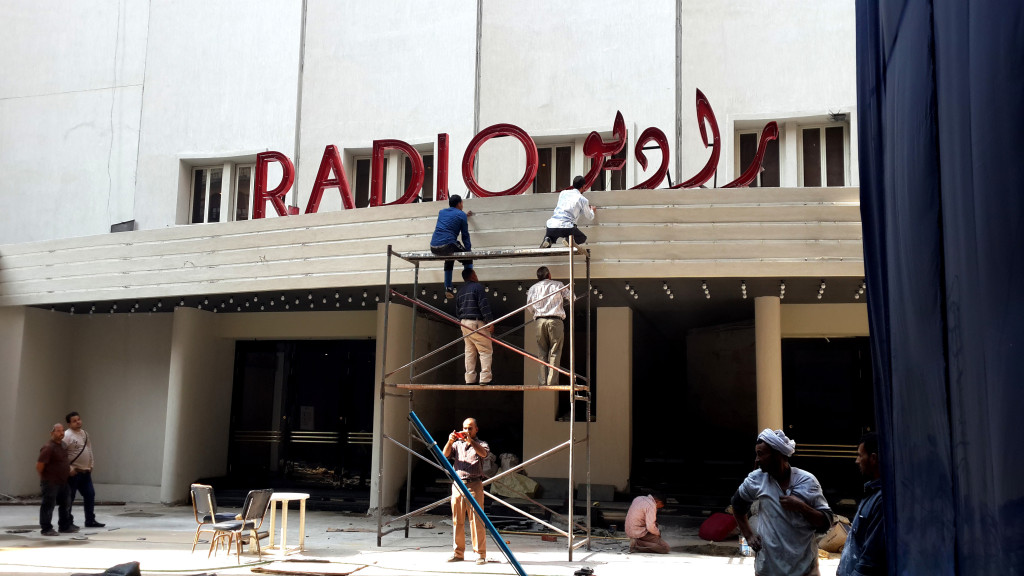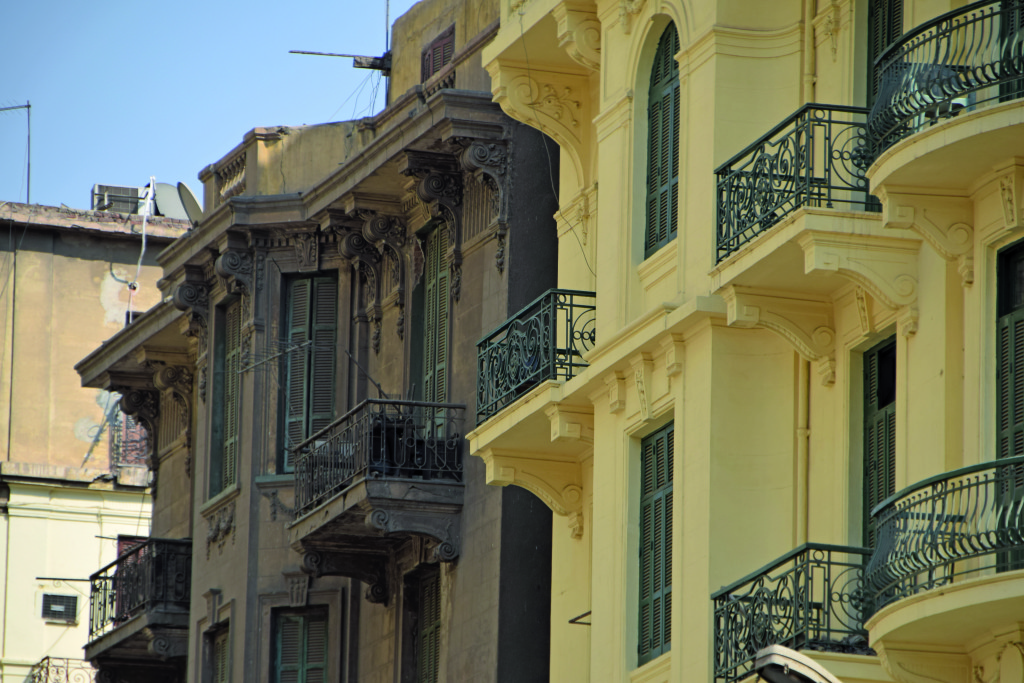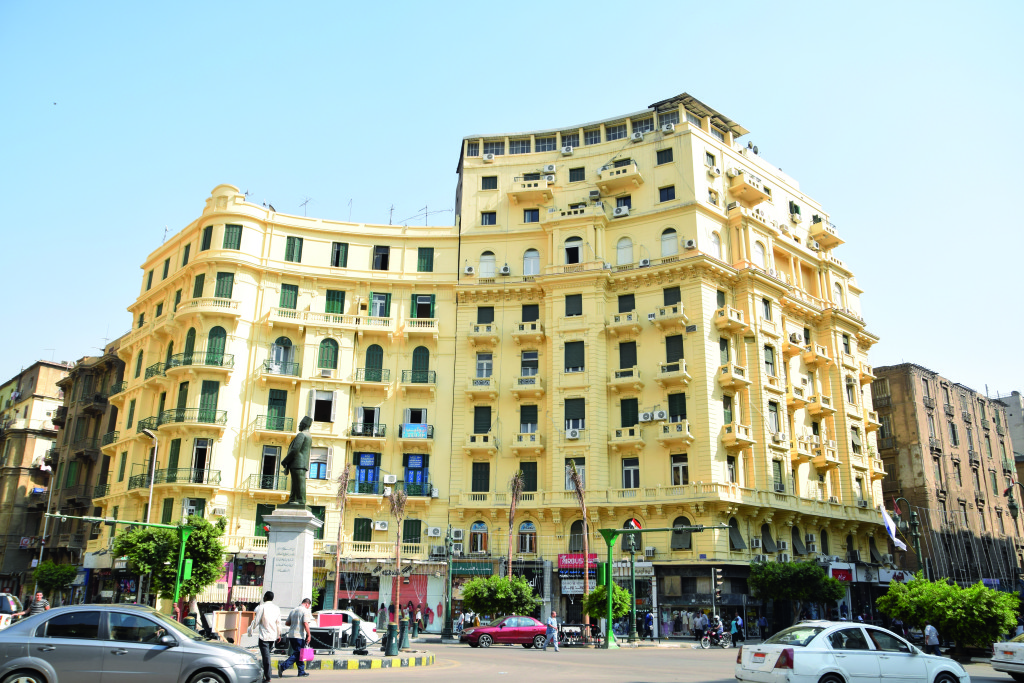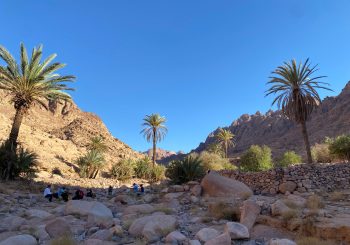By Rana Kamaly, Community Times
When Khedive Ismail came to power in Egypt, he wanted to establish a modern, elegant and vibrant downtown for Cairo that would rival the urban downtowns of Europe. After years of neglect, it seems that both private and government-led initiatives to revive Cairo’s downtown are finally making themselves felt.
Modeled after Baron Haussman’s vision of downtown Paris, Khedive Ismail’s downtown epitomized Egypt’s belle epoche. True to Ismail’s vision, it became a multicultural hub and the home of art, culture, fine dining, and fashion in Cairo. Up until the 1950s, the sidewalks provided the cover of leafy trees, and visitors could shop or eat in the district’s many restaurants and coffee shops. Since its inception in the 1860s until it began to decline in the 1950s, downtown was the true heart of the Egyptian capital.
Today, its wide thoroughfares, precisely planned intersections and public squares with statues of famous figures sets it apart from other parts of the city, although years of neglect have left it overcrowded and dilapidated.
Decay & Restoration
After many years of being home to Cairo’s intellectual and creative cosmopolitan community, downtown began its decline in the wake of 1952; its affluent residents began to move to other neighborhoods, street names that referred to the monarchy were changed and buildings began to fall into disrepair as rents were frozen by Nasser-era rent laws. Later, and as more residents moved out and Cairo became more congested, facades faded, infrastructure suffered, street vendors invaded the area, and garbage piled up.
Part of its decline was the transformation of downtown from an affluent residential area into a business and shopping district for working classes; and as Cairo continued to grow, traffic congestion became common in downtown, making it almost impossible to navigate most hours of the day.
Although the government has spoken of its desire to restore downtown to its former glory for years, it is only this year that Cairo Governor Galal Mostafa Saeed gave a green light to begin restorations that have included repainting and refurbishing buildings and renovating facades, making main streets parking-free zones, removing ugly shop signs, planting trees, and re-paving sidewalks. Another important initiative was the creation of a microbus stop, which helped to organize the flow of traffic.
Rather controversially, the plan also called for the relocation of street vendors and the removal of unlicensed coffee shops from the district’s main streets
In addition to clearing main thoroughfares like Talaat Harb Street and Mohamed Mahmoud Street of cars, the renovations have transformed Oraby Street into a pedestrian street like Alfy Street. On the whole, the change is slow but undeniable.
Private Initiatives

Private initiatives, on the other hand, are led primarily by Al-Ismaelia Investment Company, which owns more than 20 iconic buildings downtown. Misr Insurance Holding Company, which owns over 90 buildings, has also made efforts in downtown renovations.
Co-founded by Karim El-Shafei and Beltone Financial’s Aladdin Saba in 2008, Al-Ismaelia Investment Company is a private company with aim to acquire and refurbish downtown’s iconic buildings. El-Shafei explains that he and Saba share a passion for downtown, and that their initial vision included restoring the district to its former grandeur. This led them to approach private investors and pool funds to buy up properties – particularly iconic buildings. They currently own 20 buildings with a paid-in capital of EGP 563 million; some of the properties include Cinema Radio, Shorbagy Building, and The Townhouse Gallery’s Factory Space.
“We consider the Townhouse Factory Space one of our most important properties because we believe that it accommodates different socioeconomic segments. Its activities and philosophy make it the kind of inclusive space that we would like downtown as a whole to be,” explains El-Shafei.
The search for properties yielded surprising results, and the duo soon found that many buildings in downtown were in fact for sale. And since they bought whole buildings, they had fewer legal obstacles when it came to renovations, which allowed them to focus on creating modern infrastructure while restoring the original architecture.
Community Times speaks to Karim El Shafei about the company’s vision and plans for downtown.

Q: What is Al-Ismaelia Company doing in downtown?
A: We are buying privately-owned buildings and refurbishing them inside out. We also believe that we have a role in reviving the area as a whole. Our vision is to make it an inclusive place accessible to everyone. I don’t want to turn it into an affluent neighborhood that would alienate some people, but I also want to make sure that it still caters to that slightly more affluent audience that can go out to a place and have a decent meal.
Q: How did you plan the renovations?
A: We hired The International Institute for Urban Development, which is an offshoot from the Harvard School of Architecture and Urban Planning, and they basically helped us with the main plan.
Then we went through different phases; first we studied downtown and created a master plan for the neighborhood as a whole; then created a plan for our own buildings within the larger plan. We completed the first phase in late 2010 and wanted to meet with the government before we started our renovations in early 2011, but the revolution started and downtown hasn’t been a priority for any of the governments since then.
Q: What about the other buildings?
A: The government owns an average of 100 buildings of the 400 downtown. Many of these building’s facades are being repainted now along with privately owned ones. So far, the renovations are limited to the exteriors, and the interiors are being left to decay. Our concern is that if they don’t start refurbishing now, it will be very difficult to refurbish them in five years.

Q: What is the government’s plan for downtown?
A: So far, the government does not have a plan. They should have one and communicate it clearly; they need to share their vision of what they want it to be and that vision should account for the needs of different stakeholders. They should also have a short-term plan as well as a longer-term one for the next 5, 10, 20, and 40 years.
The process should be organized so that they can accommodate the needs that they want to attract rather than allowing it to develop randomly.
Some people think that the government should buy up all of the buildings downtown and refurbish them, but I think this is a very old fashioned way of thinking. As a matter of fact, I think that the only way to save the buildings is to create an economic interest in them. if you don’t have something to gain from it, you won’t maintain it, and this is what happens abroad – people maintain buildings because they stand to gain from them, so you have to take that into consideration.
Another matter to consider is how downtown has changed since the 1960s, and how the residents and types of businesses have changed as well. Today, some of these old buildings have warehouses, storage areas, workshops, and mechanic shops, and many are not necessarily safe.
But the real question is: do these functions belong in downtown?
A: I don’t have the answer to this question, because the answer should come from the government. Downtown will only have an opportunity if the government has a plan that engages all stakeholders and ideally include all the zoning considerations and requirements.

Q: Some people say that you are trying to gentrify downtown in a way that alienates its current residents. What are your thoughts on that?
A: Gentrification is a big word in the world of urban regeneration, but Cairo is a very special case. We estimate that 40% of the buildings downtown are empty, either because the owner has locked up the apartments, or because tenants pay the rent but don’t live there; we think that we can use that 40% without moving anyone.
Up until now, the scale of our work is too small for us to actually move people, but the question is what if other investors begin doing what we’re doing and tenants feel pressured to leave? In the buildings that we own, 5% of the residents are staying, and we are not interested in forcing them out. If they want to leave, they come to us and we make a deal, but we don’t pressure anyone.
Q: How will the renovations affect the price of property in downtown?
A: I think that prices will change, which is normal. I don’t think this is the eminent risk, however; for me, the real risk will come in 10 years, when the buildings that have not been refurbished will be beyond the point of repair, or will no longer be economical to refurbish .
Most of downtown’s buildings already have severe infrastructure problems, so you may have to make drastic changes like removing two or three floors or removing balconies if you want to keep them. That means that, if we don’t start working today, in 30 years, downtown as we know it may not exist.







Comments (20)
[…] Downtown Gets a Facelift – A: Gentrification is a big word in the world of urban regeneration, but Cairo is a very special case. We estimate that 40% of the buildings downtown are empty, either because the owner has locked up the apartments, or … […]
[…] Downtown Gets a Facelift – When Khedive Ismail came to power in Egypt, he wanted to establish a modern … fall into disrepair as rents were frozen by Nasser-era rent laws. Later, and as more residents moved out and Cairo became more … […]